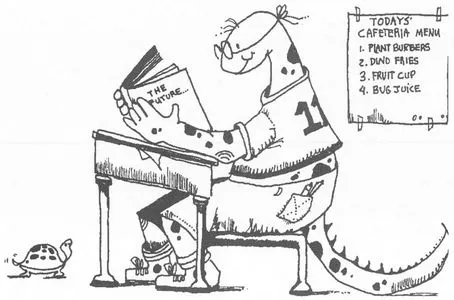
Learning About Spring with Children's Literature
Margaret A. Bryant, Marjorie Keiper, Anne Petit
- 160 páginas
- English
- ePUB (apto para móviles)
- Disponible en iOS y Android
Learning About Spring with Children's Literature
Margaret A. Bryant, Marjorie Keiper, Anne Petit
Información del libro
Taking a thematic approach to learning that employs seeing, hearing, reading, and writing, these books outline three four-week, cross-curricular units that develop the competencies children need to become fluent, independent readers and writers. While each unit focuses primarily on language—phonic skills, structural analysis, punctuation, capitalization, poetry, and comprehension—they also include math, science, social studies, music, art, and even mini-lessons in French for cross-cultural appreciation. Understanding that student ability levels in younger grades can vary widely, lesson plans are keyed to three types of learners: emerging, typical, and advanced. The series includes three titles that cover fall, spring, and winter, and each can be used independently or together throughout the school year.
Preguntas frecuentes
Información
1
MARCH

Week 1: Overview
Giant Dinosaurs by Erna Rowe
The Monster Bed by Jeanne and Susan Willis
“Who Has Seen the Wind?” by Christina Georgina Rossetti
“March” by Maurice Sendak
- Phonetic skills Identify and use the combination qu.
- Punctuation Begin to understand the uses of commas.
- Comprehension Begin to understand how to draw conclusions.
Poetry and Skills Session
| Step 1: | Introduce the poem and have the children read along. |
| Step 2: | Relate the poem to the ideas about March weather. The old saying “In like a lion, out like a lamb” is good motivation for discussion. Is March really a windy month? What could cause so much wind? Allow time to share opinions. |
| Step 3: | Read the poem again. Review the ow and ou sounds. Ask for volunteers to circle these sounds in the poem. |
| Step 4: | Ask for volunteers to circle consonant blends in the poem. |
| Step 1: | Reread “March.” Briefly review the discussion about wind. |
| Step 2: | Introduce “Who Has Seen the Wind?” It is another poem about the winds of March. Read the poem to the class. |
| Step 3: | Help the children identify the metaphors in the poem. Can trees really “bow down their heads”? Why would a poet choose to say that? Encourage the children to conclude that this is a way of painting a picture with words to create images of the wind. |
| Step 4: | Reread the poem. Have individuals mark long and short vowels. |
| Step 5: | Briefly discuss the use of question marks, colons, and apostrophes in the poem. |
| Step 1: | Briefly review the two poems introduced this week, allowing time for further discussion. |
| Step 2: | Introduce “The March Wind.” Read it with the children several times, encouraging them to enjoy making the sound of the wind. |
| Step 3: | Ask children to identify the verbs in the poem. Circle the verbs with a blue erasable marker. |
| Step 4: | Identify the adjectives, circling them with a marker of a contrasting color. This poem is also a useful tool for the review of long and short o. |
Reading Instruction
Biographical sketch of Mercer Mayer
| Step 1: | Read the biographical sketch of Mercer Mayer. Relate his fear of the dark and monsters to the personal experiences of children in the class. |
| Step 2: | Read There’s a Nightmare in My Closet to the class. Encourage discussion about the story, giving special attention to the ending. Are monsters afraid? What would frighten them? Let the children discuss their definitions of monsters. |
| Step 3: | Relate the theme of monsters to dinosaurs. How are they alike? How are they different? |
| Step 4: | Lead the discussion to the portrayal of dinosaurs as villains in movies. |
| Step 1: | Bring the children to the reading center in small groups to read the story, allowing time for enjoyment of the pictures. |
| Step 2: | Begin a list of new vocabulary words; each group should contribute. Ask the children to locate these words in the text. |
| Step 3: | Review phonetic skills as needed. |
| Step 4: | Write the vocabulary words on cards that are cut in a “monster” shape. |
| Step 1: | Briefly recap the story. Encourage the students to share what they enjoyed most about the story. Help them focus on the author’s use of his own fears to write a book. |
| Step 2: | Pass out the vocabulary cards compiled during the previous session. As the story is read, each child should hold up his or her word when it appears on the page. |
| Step 3: | Briefly outline with the children the parts of the story: the problem, the decision to do something about it, the action taken, and the results. Write this outline on the chalkboard or large chart paper for use during extension activities. |